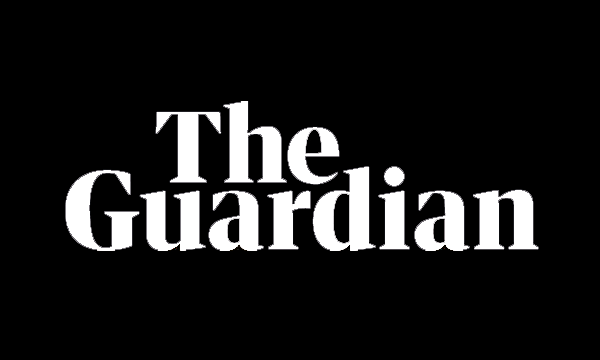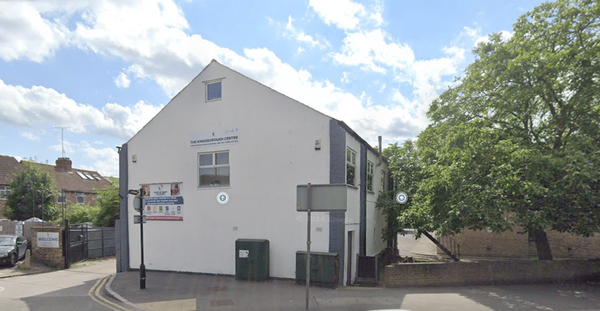
You could be forgiven for thinking that the market for Dictaphones and audio recorders was waning now that most of us carry a smartphone that’s capable of recording sound. Well, that’s not strictly true. If you want really good sound quality when recording music, gathering comments for podcasting or broadcast journalism, a dedicated digital audio recorder is still the way to go.
Now, I’m not saying that you can’t use a smartphone for small snatches of voice, but if you want to record music or chat in stereo, at high sample rates that will withstand editing, then something like the Roland R-07 is ideal. This delightfully compact recorder is as small as it can be without being so small that it’s fiddly and unusable. The R-07 is about the size of a deck of cards or a packet of 20 cigarettes if you can remember what those look like. It weighs in at just 150g (6oz) and the whole package is superbly built, despite being mainly made from plastic. The finish feels high quality, which is not something you can say about some of the other affordable audio recorders on the market.
The Roland R-07 is available in black, red or white and incorporates two fixed microphone capsules behind protective bars and grilles. There’s no foam windshield supplied, so if you are going to use the R-07 outdoors in windy conditions, something like a Rycote WindJammer will probably be a necessary purchase.
Power to the recorder is supplied by two alkaline AA batteries, which can deliver up to 15 hours of recording or playback time. I particularly like the idea of AA batteries, as they are so easy to carry spares. Recorders that use built-in lithium-ion cells can discharge fairly quickly, leaving a dud recorder just when you need it most. For me, AA is the preferred option for a broadcast journalist on the go.
The R-07 turns on by sliding the power switch on the right-hand side of the case. Next to the power switch is a Micro USB port that can function both as a data port for transferring files to and from a computer, or as a DC power port so that the R-07 can be connected to a USB charger to save batteries.
The screen on the Roland R-07 is a small rectangular mono LCD panel, which has a good white backlight so you can see the levels and settings if you’re recording in a dark concert hall. The screen shows recording levels via peak meters, battery status, and time elapsed/remaining stats. The screen is just big enough to be useful although it’s maybe slightly overcrowded. No matter, there’s always the remote Bluetooth control option, more of which later.

Beneath the LCD screen is the REHEARSAL button. This can be pressed to begin monitoring the sound and it will set the recording level automatically to take account of the peak sound. The REHEARSAL function can be easily overridden with manual levels and the recording can be monitored using wired headphones or a wireless Bluetooth headset. There is a tiny speaker built into the R-07, but it doesn’t have much power, so earphones are a better bet for checking recording quality.
Next to the REHEARSAL button are two tiny LEDs: one is a PEAK indicator, which will blink when clipping occurs, and beneath it is a Bluetooth indicator to show when the recorder is operating in Bluetooth Mode. Below the REHEARSAL button and LEDs, there is a row of four round buttons. The first is the SCENE button, which enables swift access to a series of preset recording modes that can easily be customized. The Roland R-07 can record in WAV and MP3 formats, from lower resolutions in MP3, all the way up to Hi-Res stereo in WAV at 24-bit 96kHz. The recording format and other settings can all be stored in the nine Scene modes, which include Music HiRes, Vocal, Loud Practice, Field, and Vocal Memo. You can assign the individual settings you want to each SCENE. Choosing a custom set-up is then just a matter of a single button press, without the need to go hunting through menus to change settings.
The second button is MENU, and that gives access to all the available commands such as Record, Playback, Power Management and even File Edit. The third button is MARK, which, as its name suggests, enables the addition of editing or index marks to the file in real time. The last button in the row is A>B, which enables looping of a selection for repeat playback.
Beneath the row of four buttons are two rocker switches, one for setting recording or input levels, and the other for playback volume. Between those two rocker switches is a neat four-way cluster of buttons for PLAY/PAUSE, FORWARD, REVERSE, and STOP. A button in the middle of the cluster is for starting the RECORD function and features a blinking red LED. Press the button once to move to standby and then press again to start the recording, which will then light the recorder up with two red recording lights. There are no excuses for not knowing when the machine is switched on and recording.

The whole control set-up of the Roland R-07 is very neat and I really like the fact that all the buttons are damped in order to reduce any feedback noise that could be picked up by the player when they’re being pressed. Even the base of the R-07 has a slight dampened rubberized feel in order to reduce handling noise when placing it on a table. There’s also a standard tripod thread underneath so that the R-07 can be mounted on a table tripod to reduce vibrations when recording.
And so we come to the really clever function of this little recorder. The Roland R-07 has Bluetooth technology built in which enables the recorder to be operated using an Android or iOS device (even an Apple Watch) with the free Roland app. In Bluetooth mode, there’s no need to even touch the recorder. All the functions can be set and adjusted using the app. This is a real boon if you can’t be sat next to the recorder, at a press conference or concert, for example. You can place the recorder next to the person you’re recording and then control everything from your seat using your smartphone.
What’s really clever is that the recorder also can relay the live sound it’s recording back to a pair of Bluetooth headphones. And if the headphones support the Qualcomm aptX LL (low-latency) codec, you won’t even notice any lag in the audio. The Bluetooth function means you can easily adjust and monitor the recording level ‘on the fly’, to make sure it’s recording properly, from up to 10 meters away. Now that’s what I call useful. One small caveat, the recorder doesn’t appear to support the AAC codec, so that may be an issue as Apple iOS devices still don’t support Qualcomm aptX codecs of any flavor.
Next, we come to the sound quality. If you’re used to hearing sound recorded on a smartphone, the Roland R-07 will be a genuine revelation. The R-07 is a real step up in audio quality and can record music and vocals very well, which is hardly surprising given Roland’s pedigree in music circles. The digital sound files are stored on a removable MicroSD card, and the R-07 comes with an 8GB card to get you started. If you want to buy extra cards then make sure they are MicroSD XC with a decent speed as I tried an older MicroSD HC 16GB Samsung card, which struggled and the R-07 kept flashing a ‘Slow Card’ message on its LCD screen. Getting the cards in and out of the little slot can be a bit fiddly without some sort of poking implement, but that’s true of most devices that use these tiny storage cards. MicroSD is a handy and affordable format, but I prefer the larger SD cards, which is easier to handle.
The Roland R-07 can record two files at once. So, if you wanted to make a Hi-Res version of your recording as well as a lower resolution MP3 file for sending to someone via email, it can do that. You can also record two streams but set one to record at a slightly lower recording level so that it’s possible to edit over any of the main recording if it clips. This is such a useful function and can really help in recording music that overloads the microphones. If you are worried about excessive recording levels there is also a built-in limiter function that can cut in should things get a bit raucous. The Roland R-07 certainly offers plenty of options.

The two onboard microphones have a very good range and their pre-amps have a low floor level that ensures hiss-free performance. The microphones are physically fixed so there’s no option to swing them out or in an X/Y pattern for an extra wide stereo soundstage, but that’s something that can be achieved by connecting an external stereo microphone to the 3.5mm stereo input, which can also deliver power to the mic. The input also doubles as a line-in so that the analog output from a mixing desk or other device can be recorded. Obviously, on a recorder of this size, there isn’t physically room for a pair of stereo XLR inputs that you might see on larger professional recorders, but that’s not the market that the R-07 is aimed at. This is a recorder that’s just perfect for broadcast journalists or musicians who simply want to get the best-quality sound they can in a convenient device that’s highly portable and affordable.
Verdict: The Roland R-07 audio recorder ticks most of the boxes that a broadcast journalist, podcaster or musician might want, except perhaps for advanced overdubbing functions. There’s even a built-in metronome and a graphical tuner. What more could you want? The Roland R-07 offers an affordable alternative to Sony’s amazing PCM-D100 and would make an ideal recorder for broadcast journalists and podcasters who miss the late and much-lamented Sony PCM-M10. The implementation of Bluetooth controls and monitoring on the R-07 is excellent and a great step forward for hands-off digital recording. In short, there’s very little to criticize in this gorgeous little recorder that delivers superb sound at a very affordable price.
Prices: $229 / £199 / €219
More info: https://www.roland.com/global/products/r-07/
Specifications:
Tracks: 2 (stereo) / 4 (stereo x2) * WAV x 2 recording mode only
Signal Processing: AD/DA conversion: 24 bits, 44.1/48/88.2/96 kHz
Data Type [For Recording] * Stereo only
WAVE:
Sampling Rate: 44.1/48/88.2/96 kHz
Bit Depth: 16/24 bits
MP3 (MPEG-1 Audio Layer 3):
Sampling Rate: 44.1/48 kHz
Bit Rates: 64/96/128/160/192/224/320 kbps
WAVE + MP3:
Sampling Rate: 44.1/48 kHz
Bit Depth: 16 bits
Bit Rates: 128 kbps
WAVE x 2:
Sampling Rate: 44.1/48 kHz
Bit Depth: 16/24 bits
[For Playback]
WAVE:
Sampling Rate: 32/44.1/48/88.2/96 kHz
Bit Depth: 16/24 bits
MP3 (MPEG-1 Audio Layer 3):
Sampling Rate: 32/44.1/48 kHz
Bit Rates: 32–320 kbps or VBR (Variable Bit Rate)
Memory Card: microSD CardSDHC format compatible
Audio Inputs
Internal Stereo Microphones
MIC/AUX IN (Stereo miniature phone type, plug-in powered mic
Audio Output
Phones (Stereo miniature phone type)
Internal Speaker for playback (monaural)
Nominal Input Level (Variable)
MIC/AUX IN: -31 dBu (Default input level)
* 0 dBu = 0.775 Vrms
Input Impedance
MIC/AUX IN: 4.5 k ohms
Output Level: 3 mW + 3 mW (In case 16 ohms load)
Recommended Load Impedance: 16 ohms or greater
Frequency Response: 20 Hz – 40 kHz (+-3 dB)
USB port: USB Micro-B type / USB 2.0/1.1 mass storage device class
Bluetooth
R-07 Remote: Bluetooth technology: Bluetooth Ver 4.0
Audio transmission: Bluetooth technology: Bluetooth Ver 3.0
Transmitting Power: Specification Power Class 2 (Line of sight range 10 m (30 ft))
Profile Support: A2DP, AVRCP
CODEC Support: SBC, Qualcomm aptX Qualcomm aptX low latency
Effects
Playback only. Excludes playback in 88.2 kHz or 96 kHz.
Reverb and Speed Change can’t be used at the same time.
Reverb: 4 types (Hall1, Hall2, Room, Plate)
Speed Change: 50 – 150 % of playback speed
Other
Display: Graphic LCD 128 x 64 dots (white backlit)
Power Supply: Alkaline battery (AA, LR6) x 2,
or Rechargeable Ni-MH battery (AA, HR6) x 2,
or Supplied from the computer via USB
Current Draw: 350 mA (MAX)
Playback: Approximately 15 hours
Recording: Approximately 15 hours
Accessories
Leaflet “Read Me First”
Owner’s manual
microSD card (inserted in the R-07)
Batteries (two AA)
Options
Microphone Stand Adaptor: OP-MSA1
Binaural Microphones/Earphones: CS-10EM
Stereo Microphone: CS-15S
Case: CB-PR07
Size and weight
Width: 61mm / 2-7/16 inches
Depth: 103mm / 4-1/16 inches
Height: 26 mm 1-1/16 inches
Weight: (including batteries) 150g 6oz







